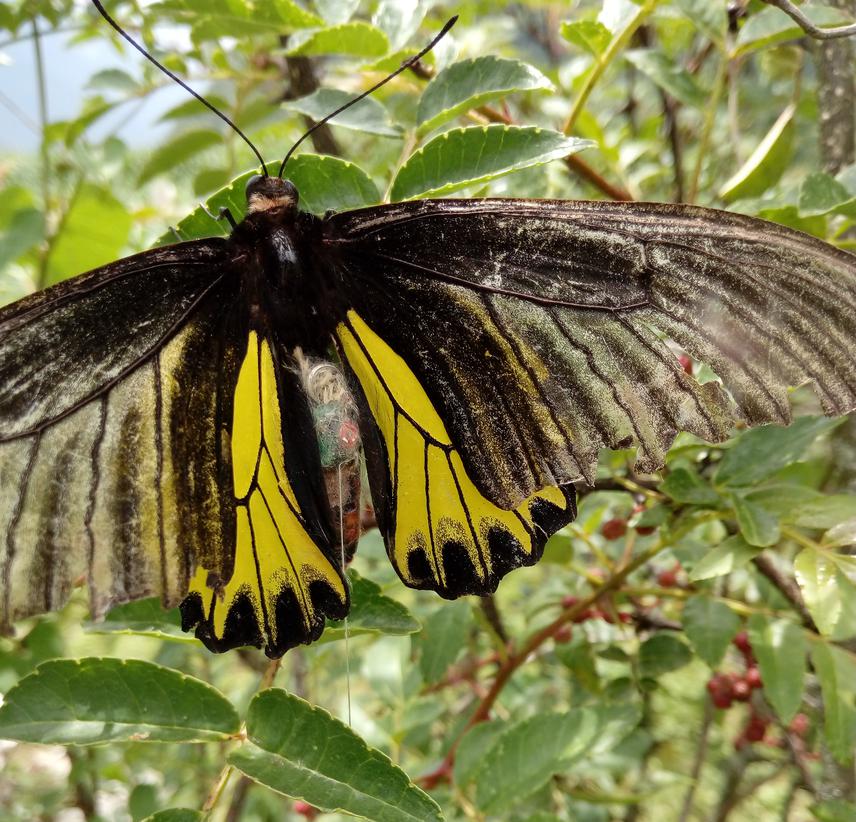Zhengyang Wang
We will engage local communities in studying Bhutanitis butterflies and their habitat lepidopteran biodiversity around Mt.Gongga. With a series of hands-on insect telemetric training and field data collection, we aim to fortify conservation capacity of local stakeholders.

Troides with transmitter attached.
Mount Gongga in Ganzi Tibetan prefecture is a biodiversity hotspot and sacred site for indigenous people that is under severe threat from unregulated development. It is home to 3,700 endemic species, including endangered, high-altitude Bhutan Glory butterflies (genus Bhutanitis). We will engage local communities in studying this group of butterflies and its habitat lepidopteran biodiversity. With a series of hands-on insect telemetric training and field data collection, we aim to fortify conservation capacity of local stakeholders of Mt. Gongga.
We will collaborate with local communities to accomplish basic ecological assessment of Bhutanitis habitat in summer 2016. We focus on life cycle and population dynamics of Bhutanitis butterfly, but will also assess local Lepidoptera diversity. All fieldwork will be in collaboration with local community members, and they will be instructed in up-to-date conservation assessment techniques such as insect telemetry, GPS data logging, mark-recapture experiments.
Along with initial habitat assessment, we will conduct surveys of conservation awareness and design workshops to address concerns locals have expressed. During winter, when the adult butterflies are inactive, we focus on training local conservationists through providing recorded seminars and designing brochures introducing biodiversity to villagers. A feedback and support platform will be maintained. Photos or recordings of different stages of butterflies and host plants will be shared on online platforms such as discoverlife.org.
In spring 2017 conservationists trained during the project will test their own strength in observing the early instars of Bhutanitis mansfieldi and gather further information to consolidate initial environmental assessment. Although team leaders will be present, local conservationists have to decide for themselves, through training in fieldwork and seminars combined with their own understanding of their homeland, what is the best conservation practice.